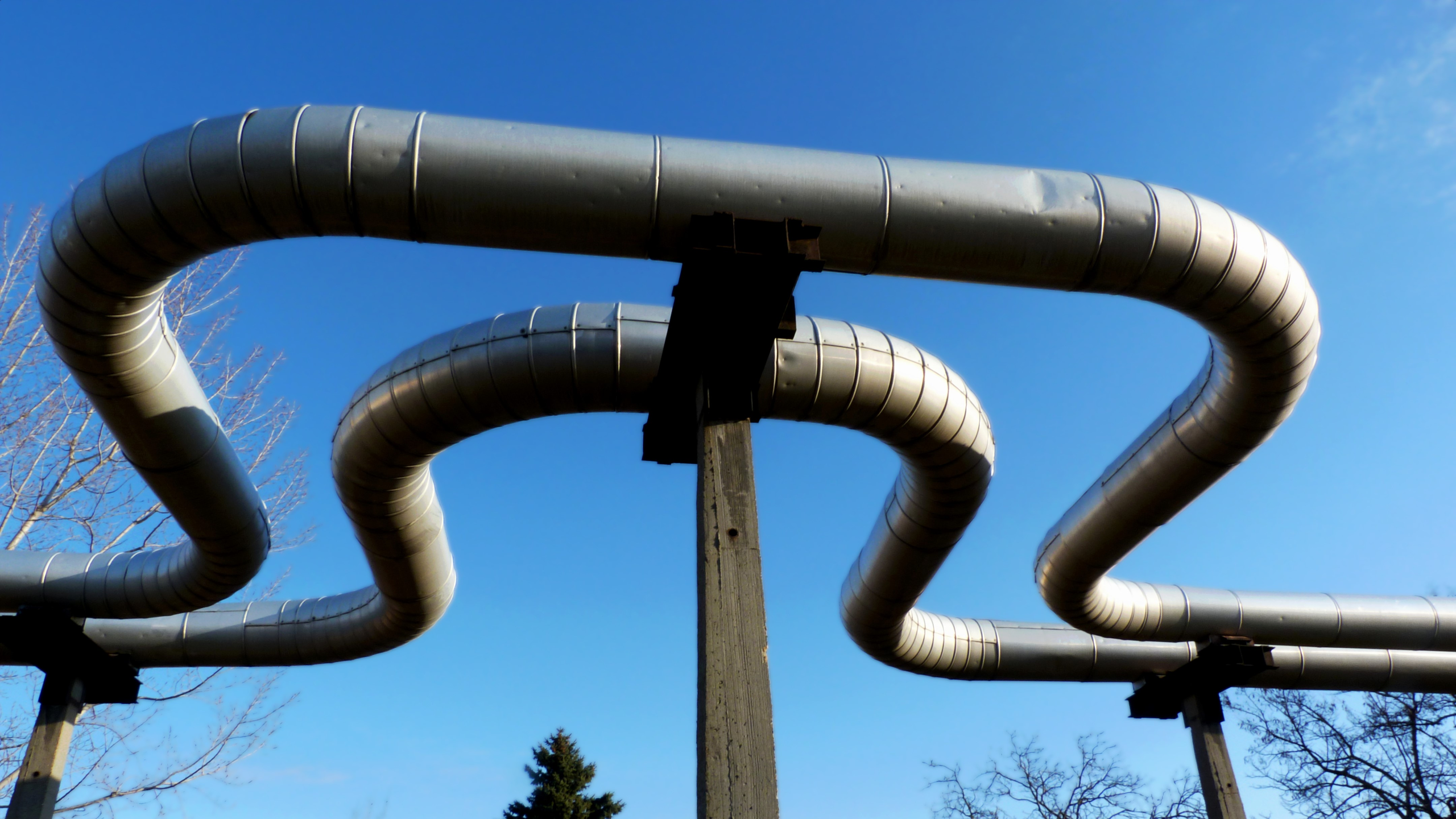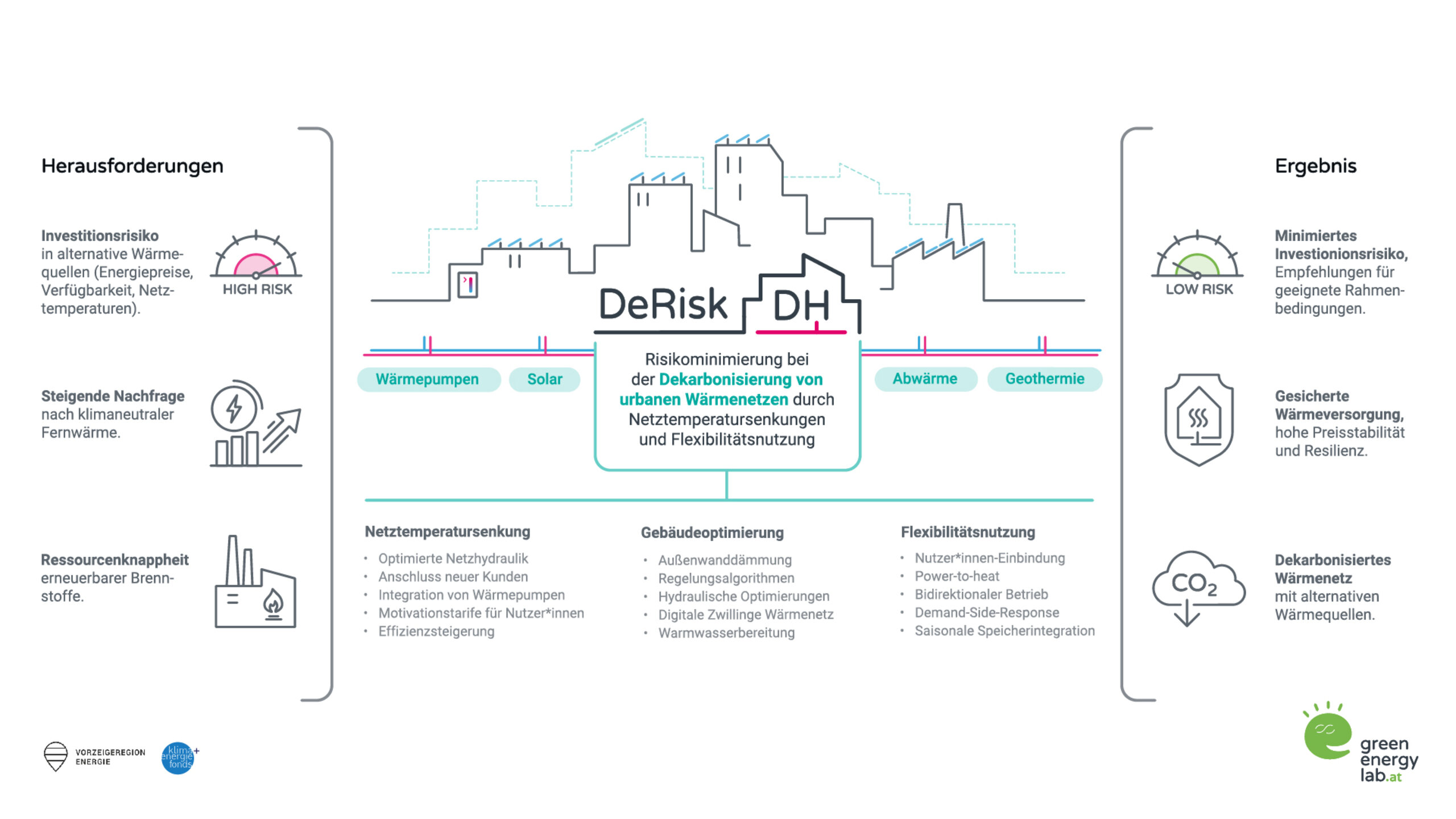DeRiskDH
Risk minimisation in decarbonisation of urban heating networks through grid temperature reductions and flexibility use
In order to achieve the goal of climate neutrality by 2040, a rapid transformation of district heating is required. Currently, about a quarter of Austria’s heating demand is covered by grid-connected heating systems, of which the share of renewable energy sources is only about 48%.
The large urban district heating networks in Vienna, Graz, Linz and Salzburg are mainly based on natural gas-based combined heat and power (CHP) plants, which offer great potential for saving emissions. Other cities, such as Klagenfurt, are looking for climate-friendly ways to meet peak loads. As the use of renewable fuels and CHP will be very limited in the future and the connection of more customer:s to the heat grids is expected, significant amounts of alternative heat sources such as heat pumps, waste heat, solar and geothermal will be needed to secure and decarbonise the heat supply.
Objective of the DeRiskDH project
The goal of the DeRiskDH project is to solve the challenges associated with the integration of alternative heat sources. These lie in particular in the optimisation of the building stock in terms of return temperatures and flexibilities, in grid hydraulics, bidirectional operation, the integration of seasonal storage, and the inclusion of consumers and business models.
The aim is also to minimise the associated high investment costs and uncertainties regarding energy prices, the availability of alternative heat sources and seasonal storage, and the implementation of retrofitting and optimisation measures.
Approach and methodology of the DeRiskDH project
DeRiskDH develops and demonstrates innovative solutions on a technological and strategic level as well as innovative business models for district heating operators and building owners to overcome the technical challenges and minimize the investment risk in alternative heat sources.
These concrete solutions will be demonstrated and tested in five cities:
- Vienna: Innovative control algorithms are developed and demonstrated in a secondary heat network, including a local waste heat source and bidirectional operation.
- Graz: The goal is to lower the temperatures of the district heating network in order to increase the performance of the heat pump in a new part of the city, focusing on water heating.
- Linz: A “Quick Assessment Tool” is to be developed to estimate the optimization potential of building services.
- Salzburg: An assessment of the hydraulics of the district heating network will be conducted, including cascading for a full decarbonisation strategy.
- Klagenfurt: Here, the focus is on activating building flexibilization measures, power-to-heat and the integration of heat pumps to reduce peak loads.




